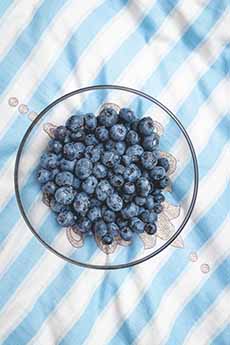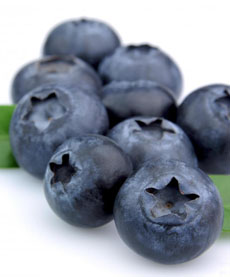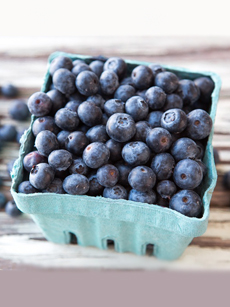What Are Huckleberries & How To Use Them
|
You may think that only Huck Finn was named Hucklebery. But BabyNames.com actually lists Huckleberry as “ primarily a male name of American origin that means Sweet Berry.” Most of the fruits we enjoy today were brought to America from Europe. North America’s native fruits* are a selection of berries: blackberries, black raspberries, blueberries, cranberries, elderberries, huckleberries and red raspberries, Huckleberries were America’s first wild foraged commercial fruit. They are members of the same family and genus (Ericaceae, Vaccinium) as two other small blue berries: the blueberry (Vaccinium angustifolium) and the bilberry (Vaccinium myrtillus L.). There are also four species of huckleberries in another genus, Gaylussacia. But enough botany; back to history. In 1615, the explorer Samuel de Champlain observed the Algonquin First Nation picking wild huckleberries. Huckleberries are extremely time consuming to-pick (as are blackberries and raspberries, which grow on thorny bushes). Some tribes crafted special rakes for combing through bushes from wood and bone to aid in the harvest. Delicious to eat fresh, they would also be preserved by sun-drying, in the manner of currants and raisins. They also were used medicinally†. The New World settlers embraced huckleberries, and soon the Algonquins began trading barrels of them. The peak season only lasts 2-3 weeks per year, between mid-August to mid-September, depending on location. They grow extensively in the Western states and along the Pacific Coast. While blueberries have a soft inside and are full of soft seeds, huckleberries (and their close relative, bilberries) have a slight crunch. This is due to tiny hard seeds inside. The crunch comes with intense flavor. Mountain huckleberries have a flavor that has been described as a combination of blueberry, fig, pineapple and ripe banana. Other varieties include the black huckleberry and the blue (Cascade) huckleberry (Vaccinium deliciosum—what a tasty name!), grow in various habitats, including mid-Alpine regions. Other varieties are native to the eastern and southeastern parts of the U.S.. Huckleberries grow on perennial evergreen shrubs (bushes) that are about 2 to 3 feet tall but can grow as high as 10 feet. Depending on the variety, the small, round fruits are black, blue or red. Blue huckleberries look like blueberries (see photos #3 and #4). All huckleberries are used in the same ways as their better-known cousin: raw, baked into pies and muffins, jams and preserves, and also used to make beverages, candies, puddings and syrups. Since huckleberry season is almost upon us, keep an eye out, and enjoy your fair share. *Latin America contributed avocados, cacao, cherimoyas, chile peppers, papayas, passionfruit, pawpaws, pineapples, soursops, squash and tomatoes. (Yes, chiles, squash and tomatoes are botanically classified as fruits.) Here are more native food origins. †The berries, leaves and stems are rich in flavonoids (a type of antioxidant). The juice was used as a mouthwash and appetite stimulant, as a tonic, diuretic and laxative. The leaves and stems were brewed into a tea to help with sore throats, inflamed gums, diarrhea and other conditions. As an anti-inflammatory, the berry was used to treat infections, pain and heart ailments. |
|
|
|
|
||






